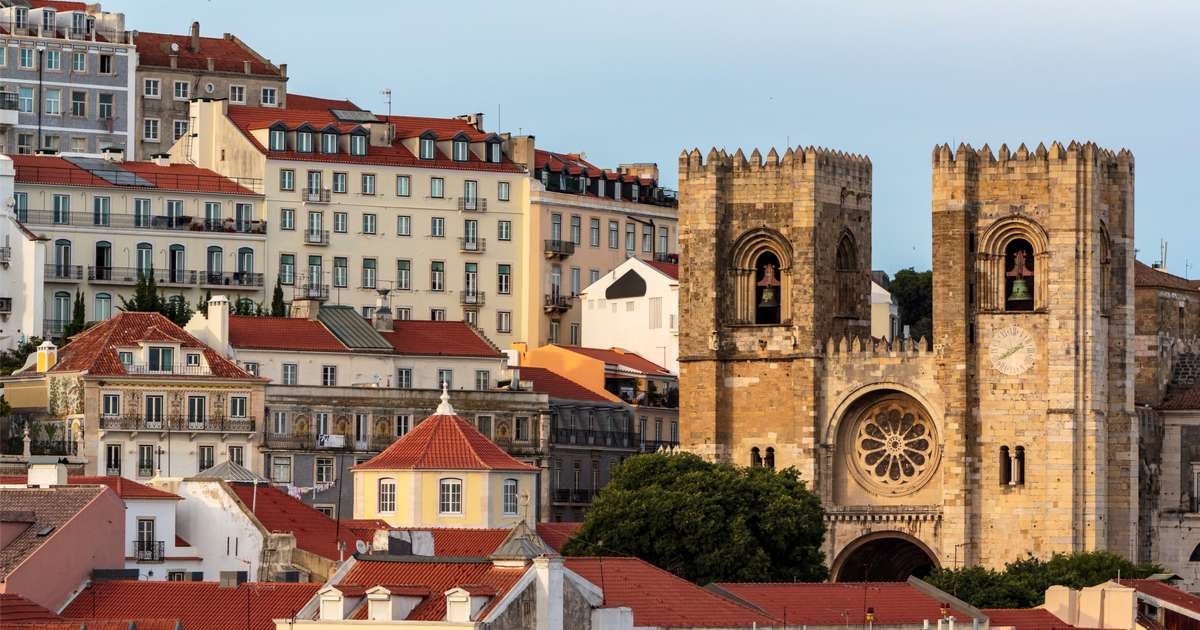Welcome to Alfama, the most sought after district by travelers in Lisbon.
Having roots which date to the Roman Era and being one of the only neighborhoods in the capitol to have survived the earthquake of 1755, Alfama truly embodies the history and personality of Lisbon which has transformed over the years. The neighborhood is a maze of narrow streets, colorful homes, impressive churches, tile (azulejo) murals, quaint cafes and the city’s best viewpoints.
With all of this and more, it’s no surprise that Alfama, the birthplace of Fado, continues to capture the hearts of all those who visit her.
Note: If you want to discover more areas in the city, we have created a Lisbon three day itinerary to the city which visits Alfama, the main highlights and Belém, as well as a guide to visiting Sintra.
What is the Alfama Quarter?
Alfama is Lisbon’s oldest neighborhood, made up of historical and cultural sights. It takes its name as a derivative from Al-ḥamma, the Arabic word for hot fountains or baths, as it was once a popular area for natural mineral water. As you will discover, Alfama was home to the Romans and Moors long before the Portuguese settled in and turned it into a traditional fishing village. The neighborhood is evidence of Lisbon before the earthquake, an interwoven fabric of Roman ruins, sok-like streets, arabic-influenced architecture and gothic churches.
Today Alfama is a blend of traditional residential life and popular tourist attractions, pulling together past and present, embodying the spirit of Portugal. The charming streets are known for their colors, the laundry lines that dance overhead in the warm Atlantic breeze, the tile shops and artisan studios, bars and cafes with unbelievable viewpoints and fresh grilled fish taverns. And of course, not to be missed is the jewel on the top of the crown, São Jorge Castle.
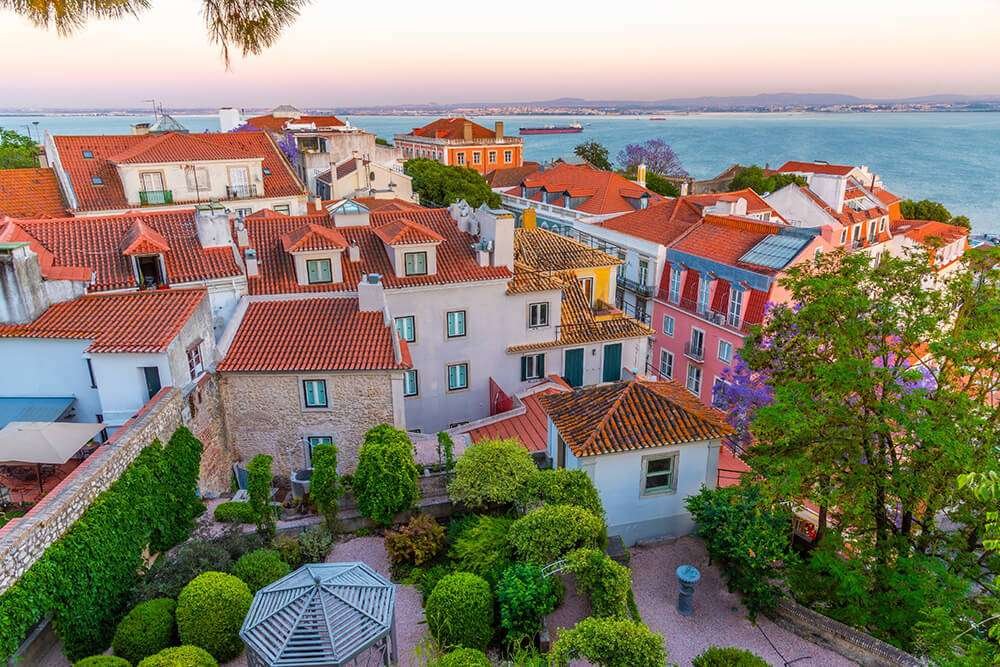
Where is the Alfama Quarter?
Alfama is located on the eastern side of Lisbon, beginning at the riverside and rising until the highest hill where São Jorge Castle is seated. Nestled between the popular neighborhoods of Baixa and Graça, it's described by many as a village within the heart of Lisbon. The district is compact and only covers about a one kilometer square distance.
How can I get to and around Alfama?
As the Alfama Quarter is centrally located, we suggest walking if you are staying within Lisbon’s city limits. If you would like to explore Alfama with Lisbon's system of public transportation the best option would be to use the Tram 28E, the historical yellow trolley car which runs from the base of the neighborhood directly through its center before making a large loop. Exiting at the top stop, Largo da Graça, and walking downhill through Alfama is a good alternative.
But, be warned! Alfama is an area best toured with comfortable walking shoes. Heels, high boots and flip flops are not suitable if you plan to walk the neighborhood. With few flat areas, most of Alfama requires visitors to head uphill or down and appropriate footwear will make your touring experience more enjoyable. If you don’t prefer to walk, at the base of the neighborhood there are many tuk-tuk drivers waiting to shuttle tourists around. However, with this option many of the intimacies that are essential to understanding Alfama will be missed.
What can I do in Alfama?
The many pedestrian-only streets of Alfama attract visitors for their distinct character. Although hilly and full of steep staircases and narrow alleyways, the neighborhood is best to explore by walking, offering pleasant sights, endless photo opps and little moments of traditional Portuguese life waiting to be noticed. While many of Lisbon's religious landmark attractions are located here, Alfama is a popular neighborhood for those interested in simply sightseeing. The stunning architecture of a time past leaves visitors with the impression that despite being touristic it is still very much authentic.
While Alfama is ideal for those just wanting to wander, exploring the labyrinth of terracotta topped buildings and cobblestone streets, it also has a handful of sites that are worth marking on your walking route. Home to Lisbon's best museums, churches, the National Pantheon, the famous flea market Feira da Ladra, postcard-worthy viewpoints and the castle, there are options for traveling during good weather or alternative activities for raining days. Alfama appeals to those with varying interests and those traveling solo, with partners or traveling with kids.
- Don't forget to check our official Lisbon Ticket Shop for great deals on attractions and museums in Lisbon.
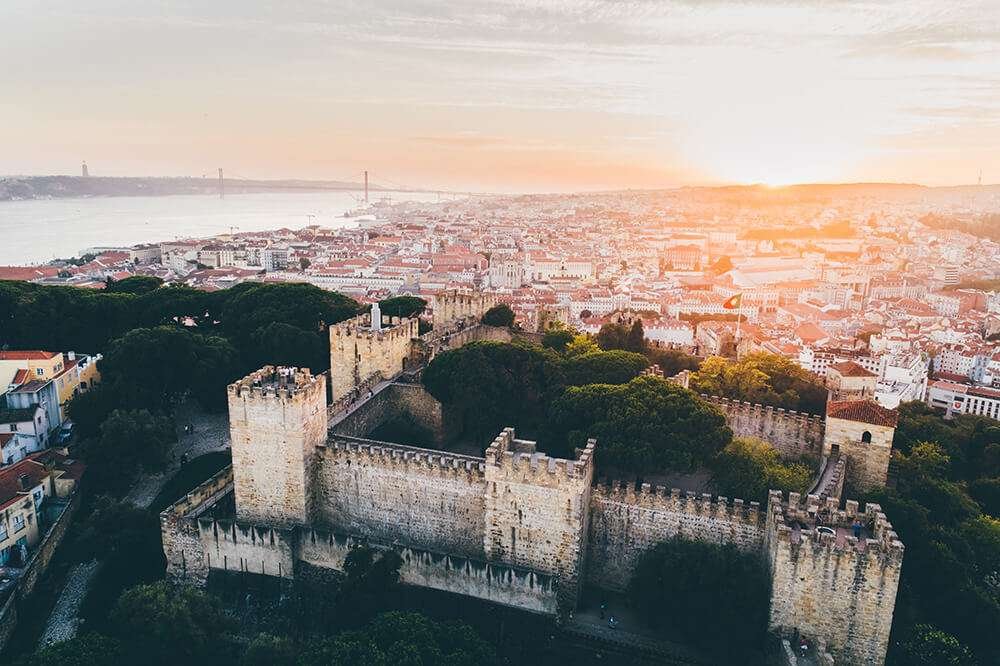
1. São Jorge Castle
Crowning the top of the highest point in Alfama, the historic citadel established in 200 B.C. offers one of the best views of Lisbon. The 6,000 square metered complex includes ruins of the royal palace, a cistern, ancillary buildings, big gardens and castle walls and towers that must be climbed!
The hill with the same name is believed by archeologists to have been occupied by humans since the 8th century B.C., beginning with the Celtics. Groups to have followed include the Romans, Visigoths and Moors before Afonso Henriques and the crusaders captured the castle and occupied it as the first king of Portugal. In order to thank the English for their help, the castle was named after the patron saint of England, Saint George.
The palace was the site of many royal events and ceremonies. When Vasco da Gama returned from his voyage to India he was honored here by King Manuel I. Sadly, like most of the architecture in Lisbon, it was partially destroyed during the earthquake and after 1755 it no longer functioned as a palace.
It’s a great place to spend a few hours, touring the towers, the gardens, the weaponry and the archaeological site. If you're not afraid of heights, head up to the walking path along the top of the walls to get a stellar view of Lisbon.
Did you know that there is one of Lisbon's most incredible historic boutique hotels located inside the castle walls? Book your stay for a night and feel like royalty!

2. Miradouros
As Alfama is primarily located in the hills of Lisbon, viewpoints are promised around every corner. Two of the most sought out viewpoints in Lisbon, or miradouros, are those of Santa Luzia and Portas do Sol.
The first view most people reach when entering Alfama from the base of the neighborhood is Santa Luzia- a two level terrace beside the bougainvillea covered Santa Luzia national monument church. The combination of the azulejo covered terrace and church makes for a promising picture.
Only a few minutes walk up the road from Santa Luzia is the Portas do Sol Miradouro. This area is sought-out for postcard worthy photographs as it includes a great shot of São Vicente de Fora Monastery and a sea of rusty colored terracotta rooftops. Located here is one of the most popular kiosks and the statue of the city's patron Saint Vincent. Both viewpoints attract local musicians and those looking to sit and enjoy a glass of wine.
→ Kiosks are often some of the most popular places to grab a drink in the city. Continue with our related article for a complete list of Lisbon's best bars and wine spots.

3. Lisbon Cathedral
Striking with its large rose window and gothic towers, the Lisbon Cathedral was constructed in 1147 by the Christian Crusaders and was the first religious building to be built after control of the city was taken from the Moors. Officially named Santa Maria Maior, it quickly became the biggest and most important church in Lisbon and pushed religion to the center of the Portuguese community.
Like many structures in Lisbon, it suffered damage from the earthquake and required restoration, resulting in a fantastic combination of architectural styles. It is free to enter and the dark gothic architecture of the inside is stunning.
For a small fee you can access the cloister where an impressive archaeological site is on display which includes remains from eras where Lisbon was occupied by the Romans and the Arabs, as well as artifacts from the Medieval years. Part of the cathedral was built upon a mosque which was a symbolic move to mark that the Catholic Portuguese had taken Lisbon from the North African Moors. On the second level of the cathedral is the treasury, with an impressive display of luxurious items from religious figures to wealthy elite and royals.
One of the best ways to familiarize yourself with the neighborhood is to download a self-guided audio tour of Alfama. It's easy to use and can be listened to on the go or at home!
4. Feira da Ladra
Explore the eclectic flea market made up of local vendors and antique dealers. Organized every Tuesday and Saturday, the open air market Feira da Ladra offers guests the experience of walking through rows of eye-catching stalls selling every kitsch trinket and household niknak one could dream of. From recycled clothes to vintage jewelry, handmade art and valuable antiques, you’re bound to find it here.
Originally named Thieves Market, this attraction is popular for those looking to do a bit of shopping, browsing, photography or just grab a coffee and walk. Feira da Ladra began in the 13th century and was hosted in different locations around the city before eventually finding its permanent home behind the São Vicente de Fora Monastery. Prices at the stalls are almost always negotiable and it offers the perfect opportunity to find something small to take home as a souvenir.
The popular Santa Clara kiosk, located just beside the market, is included in our relaxing Lisbon kiosks self-guided audio walking tour.
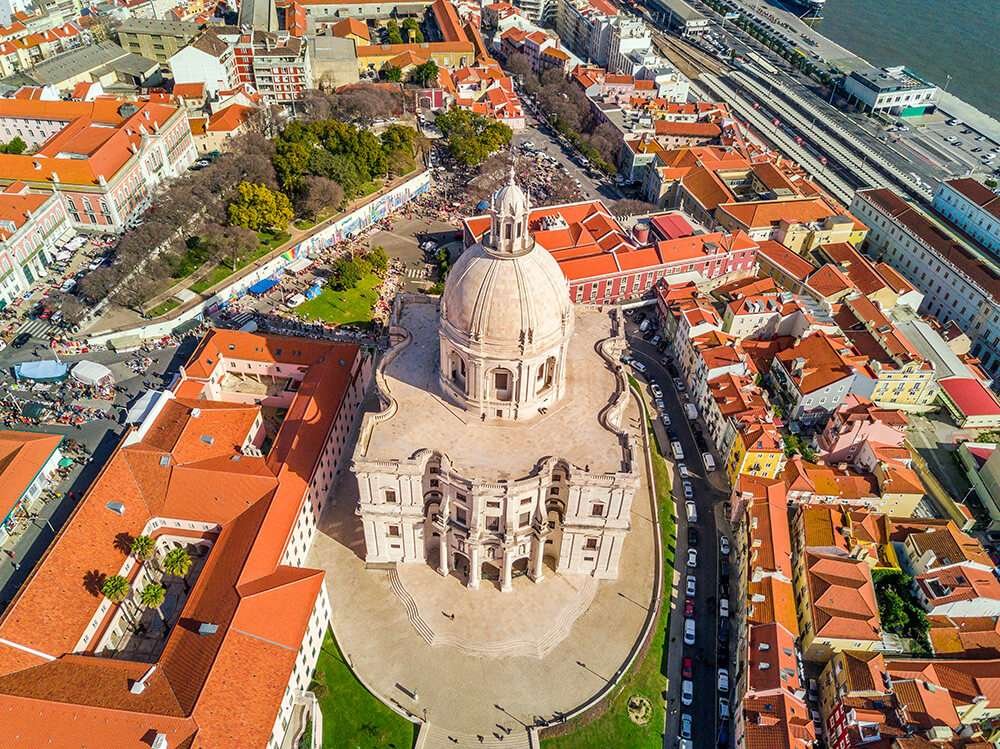
5. National Pantheon
Lisbon's National Pantheon is a striking work of architecture and is the final resting point of many significant Portuguese figures. The 17th century church took more than 300 years to build and its construction defied a curse which predicted the building would never be completed.
Respected as the first Baroque monument in Portugal, the interior is beautifully decorated but not to traditional standards. Instead of azulejo tiles and gold detailing it has been adorned with colored marble, stonework floors and symmetrical patterned detailing inspired by Rome’s St. Peter’s Basilica. The viewpoints from the location are fantastic and allow visitors to see as far as the Vasco da Gama Bridge.
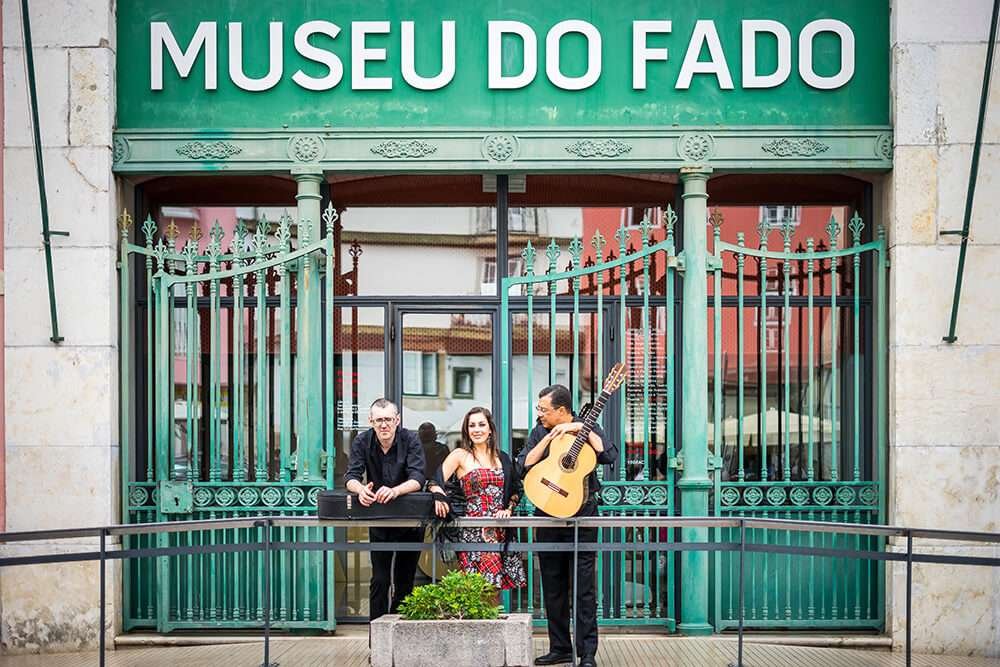
6. Fado Museum
Alfama is the birthplace of the traditional music of Portugal, Fado. The melancholic music with songs of heartache and loss, grew from Alfama during the era it was known as Alfama do Mar (Alfama of the Sea). During this time the district was primarily occupied by the lower working class of the sailors and fishermen, who would head to sea, leaving lovers behind and heartbroken.
If exploring Fado interests you, pop into the Fado Museum and experience how the music evokes feelings of saudade- the emotion of missing something that no longer exists. The exhibits are a compilation of audiovisual shows, musical instruments, music archives, photographs and film, and focus on the singers and the composers behind generations of Fado. Often live shows are held in the museum's cafe and if you happen to be visiting on a weekend, you might just be lucky enough to catch one. One of the highlights of Alfama is that many of the restaurants offer traditional Fado shows with dinner which is an alternative or additional option. Read more about dining opportunities in our Lisbon Guide to Restaurants.
- A handful of fantastic museums are located in the city. Discover more about the best museums to visit in Lisbon.

7. Igreja de Santo Antônio
The Church of Saint Anthony is a national monument dedicated to the patron saint of lost items and love. The Roman Catholic church is believed to have been built on the site where Anthony was born in 1195, with an underground chapel that marks the spot. Due to the damage suffered during the 1755 earthquake, the building which stands today is not the original, with the exception of the main chapel. Its new Baroque façade is often mistaken for a palace, but inside you will discover a church dedicated to the saint's life.
Outside the church a statue of Saint Anthony stands proudly before his church and welcomes people to engage in a fun tradition. The legend of the saint claims that if you can throw a coin at the statue of Saint Anthony and successfully have it land on his book a new love partner will appear in your life.
Speaking of love, if you happen to be traveling for a honeymoon or with that someone special, make sure to read our article on the most romantic hotels in Lisbon when booking your stay.
8. Roman Amphitheater
While it's hard to imagine the ruins today as something grand and massive, this uncovered section of amphitheater looked out at the Tejo River, held up to 5000 people and is the only known amphitheater in Portugal from this era.
First constructed in 10 B.C. by Emperor Augustus, it was added to and renovated under Emperor Nero as Lisbon grew as a prominent city in the empire. The amphitheater was divided into sections for the spectators, with knights in the front row, followed by soldiers, civil servants, citizens, freed slaves and finally women.
It was destroyed and covered when the great earthquake occurred and was only discovered in 1964. Although quite a bit of imagination will be needed to envision it as it was, a visit today gives a glimpse into the far past of Lisbon’s history.
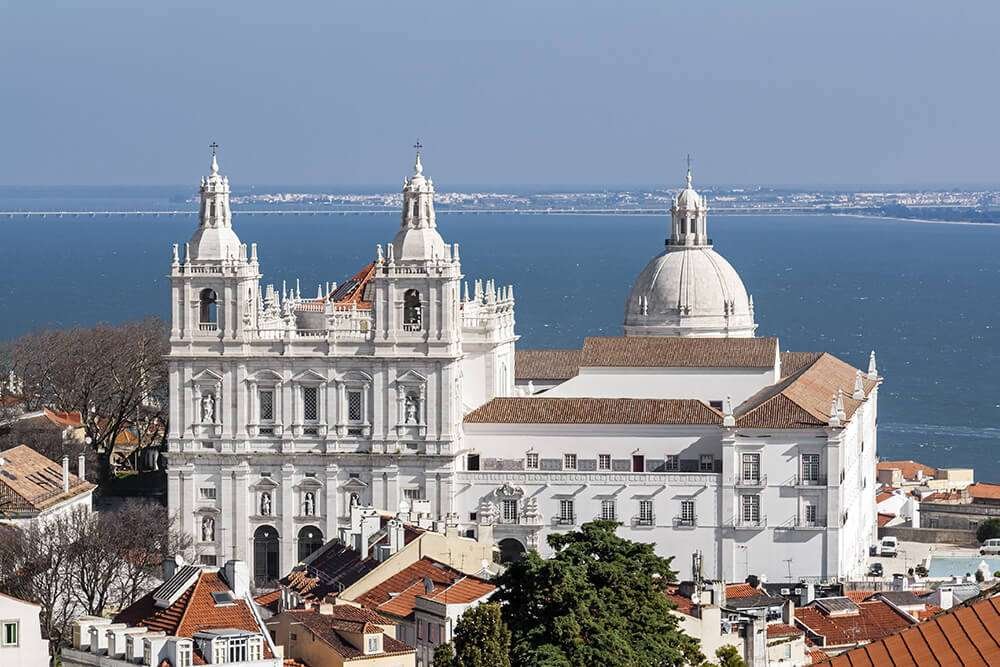
9. São Vicente de Fora Church
The 16th century late Renaissance São Vicente de Fora church is dedicated to Lisbon’s patron saint, Vincent of Saragossa. Its name translates to Saint Vincent on the Outside, and was erected as a promise by the first king to build monasteries on grounds where crusaders were buried.
The interior decoration of São Vicente de Fora consists of beautiful works of polychromatic marble, azulejo covered cloisters, murals, painted ceilings and sculptures by famous Portuguese artists. It has the reputation as the monastery with the most extensive Baroque tile collection in the world. In the Gallery of Fables there are a series of panels illustrating the famous fables of La Fontaine. The church also includes a fantastic collection of priest's clothing, paintings, gold and sculptures.
The monastery holds the pantheon of the House of Braganza, the family dynasty which ruled Portugal for 250 years. One of the most notable figures within is Princess Catherine of Bragança, who went on to become the queen of England in 1662. The art which decorates the inside of the monastery has served as an example of religious art and architecture for future churches within Portuguese territory.
- Read more about the famous religious sites in Lisbon.

10. Casa dos Bicos
The Casa dos Bicos is not only a unique work of architecture but also home to the foundation for the Nobel prize winning Portuguese writer, José Saramago. The 16th century building, nicknamed House of the Beaks, instantly stands out among its neighbors with more than 1,000 diamond shaped stone pyramids covering the exterior. Modeled after the Venice palazzos, it is topped with Portuguese Manueline style arched window design.
Head inside and take your choice of visiting either the José Saramago Foundation or the Museum of Lisbon. The foundation includes his personal library, an exhibition dedicated to his life and work, as well as a venue for events and literary discussions. There is a garden where a memorial to Saramago is located, and which marks his final resting place.
Once you follow this Guide to Alfama, you will be able to tour others as if you were a local! Leave us comments below and let us know what you loved most about the historic heart of Lisbon.
To discover the other neighborhoods in the city, check our article a 3-Day Itinerary in Lisbon.

